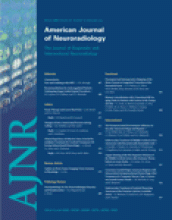Abstract
PURPOSE: Carotid stenosis quantification traditionally uses measurements of narrowest stenosis diameter. The stenotic carotid lumen, however, is often irregularly shaped. New PACS workstation tools allow for more precise calculation of carotid geometry. We compare the narrowest stenosis diameter with 2D area stenosis measurements, with the hypothesis that the narrowest diameter is a good predictor of the more precise area measurement.
METHODS: Two neuroradiologists evaluated 178 stenosed carotids in a blinded protocol. Carotid artery bulb stenosis was identified on axial CT angiography and measured in millimeters at its narrowest diameter. An AGFA Impax 4.5 Volume Tool (VT) using Hounsfield units was used to estimate the cross-sectional area of the contrast luminogram. Pearson correlation coefficients were calculated between the millimeter stenosis and the VT area, as well as between the VT area and the calculated area (radius based on narrowest diameter). Regression analysis was performed with the VT area and narrowest diameter datasets.
RESULTS: Excellent interobserver correlation (correlation coefficients, 0.71–0.85; 2-tailed significance =.01) permitted averaging of measurement data. There is excellent correlation between the VT area and the narrowest diameter (correlation coefficient,0.88; n = 176). The VT area was generally greater than the calculated area by an average of 2.77 mm2. There was excellent correlation between the VT area and the calculated area (correlation coefficient, 0.87; n = 176). Regression analysis shows the ability of the diameter measurements to predict corresponding area stenosis.
CONCLUSION: Although some carotid stenoses are irregularly shaped and noncircular, measurement of the narrowest stenosis is a reasonably reliable predictor of the cross-sectional area.
- Copyright © American Society of Neuroradiology












